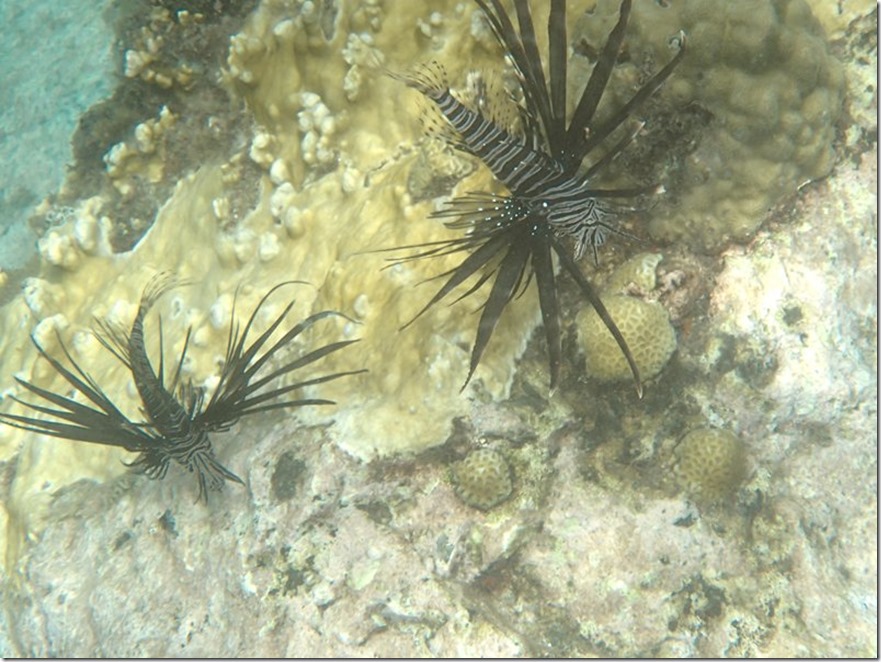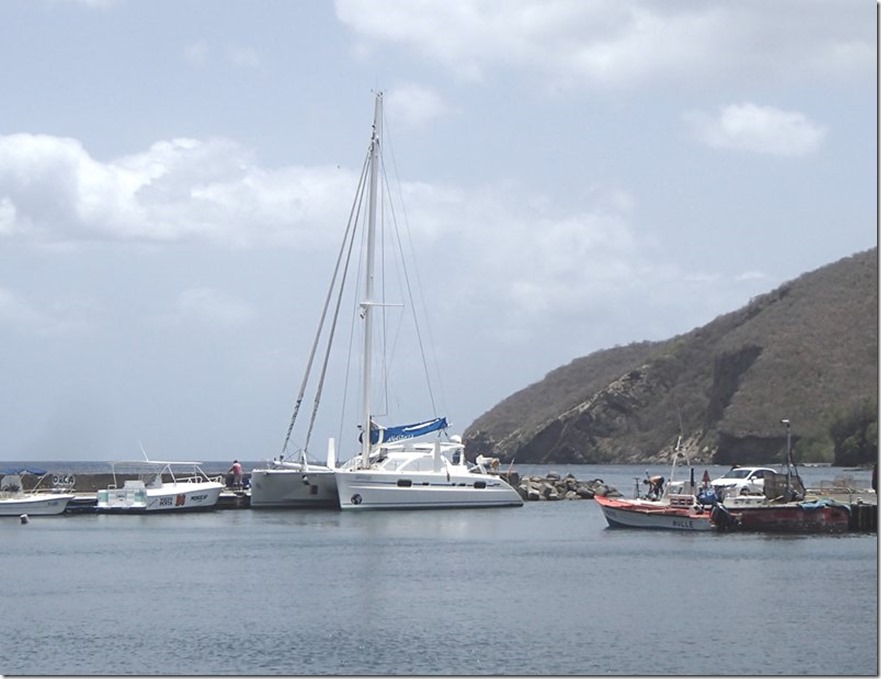Beware diesel additives

Anastasia
Phil May and Andrea Twigg
Sat 13 Jun 2015 17:21
|
14:38.4N
61:08.3W
We anchored in Case Pilote at lunchtime last Thursday and an engineer from
Inboard Diesel came onboard that same afternoon to take a look at the
engines. His initial conclusion was that we needed to get a new high
pressure pump for the starboard engine. This was duly ordered and we
arranged to return on Monday to have the fuel tanks emptied and cleaned before
the pump arrived. The seine net fishermen kicked us out of Case Pilote in
the evening, so we moved down the coast to an anchorage in Schoelcher, to spend
the weekend waiting for the part to arrive. We rented a car for a week to
do some shopping and sightseeing.
After a weekend of anticipating the manoeuvre, I was a bit nervous about
going into the dock on Monday. We arrived at 8:30 but even so there was
already a 15 knot breeze blowing through the harbour. Our berth was right
at the entrance to the harbour, against the seawall. We were going to be
berthing starboard side to the dock and the breeze was blowing us on.
Fortunately this meant that we could come in forwards. The only challenge
was making sure we got past the rocks jutting out from the start of the seawall
and also making sure we stopped before encountering the boat moored beyond our
berth.
It went OK. I came in at about 1 knot to ensure enough steerage way
to clear the rocks and reversed the port engine when we were alongside the
space. We span through about 45 degrees, ending up stern to the space, but
the bows started blowing round and we were only about 30 degrees to the dock
when the stern touched. Andrea was there with a fender, so no scrapes on
the hull at all. In retrospect, it could have been done more neatly by
steering into the space more, and then using the engine to spin us parallel to
the dock, rather than trying to do it all using the wind. Next time.
The guys from Inboard Diesel got to work. Philibert pumped out our
400 remaining litres of bad fuel and then Andrea and I spent a happy afternoon
with cloths on sticks, wiping out the crud from the bottom of the tanks.
Meanwhile Cedric changed the timing belts on both engines (not related to the
problem, but something that was well overdue). Philibert refuelled us with
300 litres of new diesel.
We have a flight back to the UK from Grenada, booked for June 20th.
At this stage I was starting to get nervous about the timescales for repairing
the engines (and still am). It is a simple job to replace a high pressure
pump on a Volvo D3, so I decided to try switching the port/starboard pumps just
to make sure the starboard engine would work with a new pump. I
tried this and, of course, switching the pumps did not solve the problem.
Back to the drawing board. Cedric ran more diagnostics and decided that it
was a fuel injector problem. All the injectors from both engines needed
testing. Off they went to a garage at the south end of Martinique which
had the equipment to test injectors.
The next morning the verdict was that every injector was bad. (The
port engine was running, after a fashion, but apparently it only takes three
half-working injectors to run an engine.) We needed to get 10 new
injectors, but there were no replacements available on Martinique. Volvo
Penta in Europe could only supply 7 injectors and these would be 900 Euros
each! This is a crazy price because these are standard Bosch injectors
that cost about £250 each for the identical engine in a Volvo car. I did
some googling and came up with 10 reconditioned injectors available from PF
Jones in the UK for £115 each. I spoke to Frank, then owner of Inboard
Diesel, and agreed that I would order these.
Shipping stuff to islands is always a bit hit or miss. I know from
bitter experience that what can go wrong will go wrong. In this case the
invoice I received had only the billing address in Hertfordshire and not the
shipping address in Martinique. I phoned up David at PF Jones and asked
him to double check the shipping address. He said no problem. Later
that day I phoned David to get the UPS tracking number. I checked the UPS
web site and the injectors were being shipped to Case Pilote, GB! I phoned
David again, heard some cursing in the background, and he said it was all sorted
out now. So here we sit, waiting for our injectors to arrive. The
tracking info says they have been through Koln and Paris so perhaps they really
are in transit to Martinique.
What caused the problems in the first place? We bought 600 litres of
new diesel in St Thomas on May 12th, at which time I added my usual mix of
Biobor (diesel bug killer) plus a new brand of water absorber. The first
engine failure was two weeks later, on 26th May. Did you know there are
two types of water absorber, one which increases the solubility of water in the
diesel and one which just causes the water to go into suspension. Use the
latter when there is any existing water in the tanks and the result is
disastrous. Every drop of water is dispersed into the fuel, which is
really bad news for your fuel injectors.
Be warned - it only took about 8 hours of motoring on the waterlogged fuel
for every single injector to be damaged. Best to stick with draining water
from the Racor filters periodically, rather than using a water dispersing fuel
additive.
 A pair of Red Lionfish (in their black banded phase) spotted while
snorkelling in Schoelcher. How can these floaty things be “voracious
predators”?
 Too slow and you blow onto the rocks, too fast and you spin right round
when you reverse the port
engine |